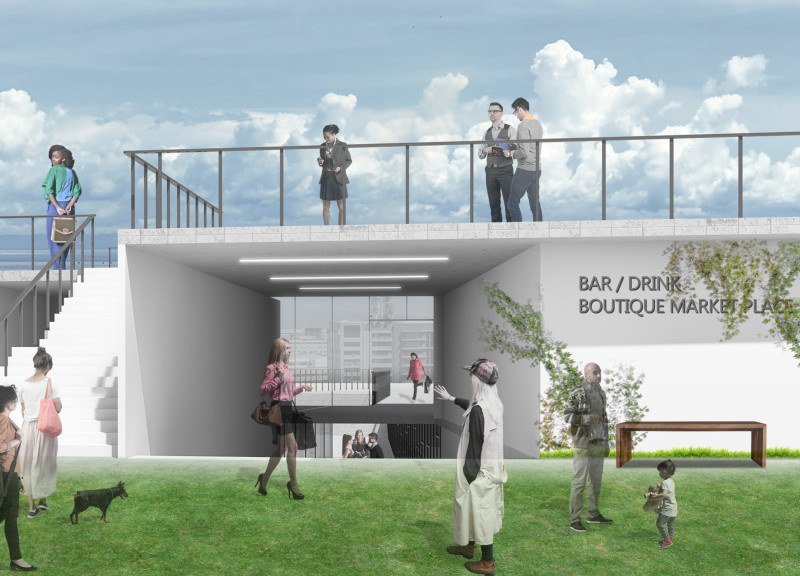5 key facts about this project
## Fashion Hub of Bangkok
### Overview
Located in a vibrant urban environment in Bangkok, the Fashion Hub aims to establish the city as a significant player in the ASEAN fashion industry. The project is designed to create a multifunctional space that integrates various fashion-related activities while promoting community interaction and engagement. Emphasizing a blend of fashion and nature, the design features extensive green spaces that serve both as recreational areas and as settings for fashion exhibitions, thereby honoring local cultural heritage while fostering innovation.
### Space and Circulation Strategy
The site design facilitates enhanced connectivity with the surrounding urban fabric, ensuring efficient movement to and from the space. Three primary circulation routes have been strategically developed: roads, subway access, and pedestrian paths. The proximity to subway stations is critical for increasing public accessibility and minimizing vehicular traffic, promoting a pedestrian-friendly environment. This encourages interaction between local businesses and potential fashion professionals, reinforcing the hub’s integration within the community.
### Material and Design Considerations
Material selection is pivotal in achieving both aesthetic appeal and functional performance. Although specific materials are not detailed in the provided designs, it is anticipated that the building will utilize glass and steel for facades, enhancing natural light while contributing to a modern architectural aesthetic. Concrete is likely to be employed for structural elements, ensuring durability, particularly in exhibition areas. The inclusion of natural elements such as greenery through planters and green roofs highlights a commitment to environmental sustainability, aligning with contemporary architectural standards.
In terms of spatial organization, the Fashion Hub will encompass exhibition halls for showcasing collections, design studios for educational purposes, boutique marketplaces for local designers, and communal spaces such as cafes and restaurants, all promoting collaboration and social engagement.






















































